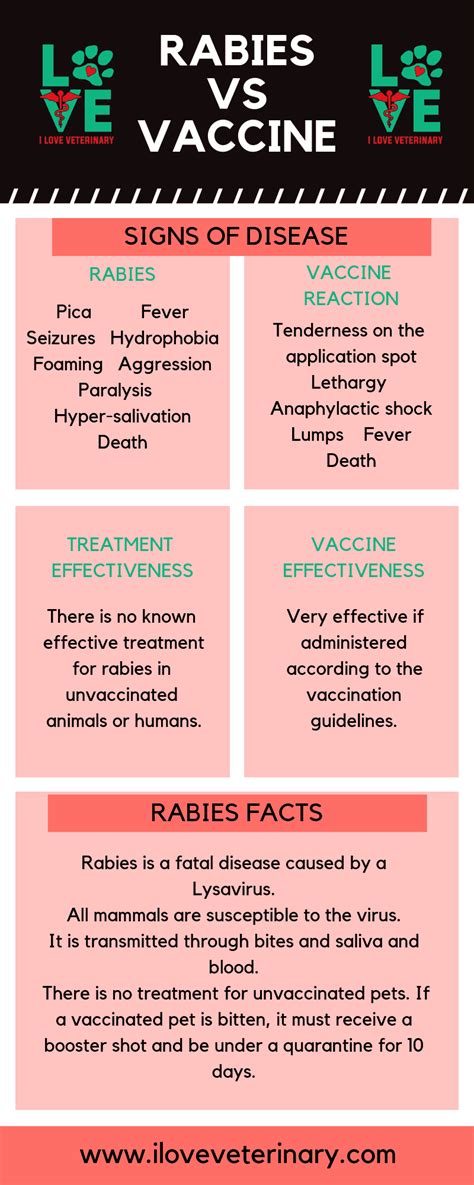As veterinary technicians, we understand the importance of providing top-notch care to our furry friends. However, it's equally crucial to prioritize our own safety and well-being while working with animals. One significant risk we face is the transmission of rabies, a deadly viral disease that can be spread through animal bites or scratches. In this article, we'll delve into the importance of the rabies vaccine for vet techs, discuss the protocol for administering the vaccine, and explore the necessary precautions to take in the workplace.
Understanding Rabies

Rabies is a viral disease caused by the lyssavirus, which affects the nervous system of mammals, including humans. The virus is primarily spread through the saliva of infected animals, usually through bites or scratches. According to the World Health Organization (WHO), there are approximately 55,000 to 60,000 human deaths worldwide each year due to rabies. The majority of these cases are attributed to dog bites.
Symptoms and Transmission
The symptoms of rabies in animals can vary depending on the species, but common signs include:- Changes in behavior, such as aggression or lethargy
- Difficulty swallowing or eating
- Drooling or foaming at the mouth
- Paralysis or weakness in the face, arms, or legs
If an infected animal bites or scratches a human, the virus can enter the body through the wound. The incubation period for rabies can range from a few days to several months or even years. Once symptoms appear, the disease is almost always fatal.
Importance of Rabies Vaccine for Vet Techs

As veterinary technicians, we are at a higher risk of contracting rabies due to our frequent interaction with animals. The Centers for Disease Control and Prevention (CDC) recommends that all individuals who work with animals, including vet techs, receive the rabies vaccine as a precautionary measure. The vaccine is composed of inactivated rabies virus and is administered in a series of injections, typically two or three doses, over a period of 21 to 28 days.
The benefits of the rabies vaccine for vet techs include:
- Protection against the rabies virus, reducing the risk of transmission
- Reduced anxiety and stress related to the risk of contracting rabies
- Compliance with occupational health and safety regulations
- Enhanced ability to provide care to animals suspected of having rabies
Vaccine Protocol
The rabies vaccine protocol for vet techs typically involves the following steps:- Initial vaccination: Two or three doses of the vaccine are administered over a period of 21 to 28 days.
- Booster shots: Booster shots are given every two years to maintain immunity.
- Post-exposure prophylaxis (PEP): If a vet tech is bitten or scratched by an animal suspected of having rabies, PEP is administered immediately. This includes a dose of rabies immune globulin and a series of vaccinations.
Precautions in the Workplace

While the rabies vaccine provides protection against the virus, it's essential to take additional precautions in the workplace to minimize the risk of transmission. These precautions include:
- Wearing personal protective equipment (PPE), such as gloves, masks, and eye protection, when handling animals suspected of having rabies
- Ensuring all animals are up-to-date on their vaccinations and health checks
- Using proper restraint techniques when handling animals
- Cleaning and disinfecting equipment and surfaces regularly
- Reporting any animal bites or scratches to a supervisor immediately
Additional Tips for Vet Techs
In addition to following the vaccine protocol and taking precautions in the workplace, vet techs can take the following steps to minimize the risk of contracting rabies:- Stay informed about the latest developments in rabies transmission and prevention
- Participate in regular training and education programs on rabies prevention and control
- Ensure all clients are aware of the risks of rabies and take necessary precautions when handling their animals






What is the incubation period for rabies?
+The incubation period for rabies can range from a few days to several months or even years.
How is the rabies vaccine administered?
+The rabies vaccine is administered in a series of injections, typically two or three doses, over a period of 21 to 28 days.
What precautions can vet techs take to minimize the risk of contracting rabies?
+Vet techs can take precautions such as wearing PPE, ensuring all animals are up-to-date on their vaccinations, and using proper restraint techniques when handling animals.
